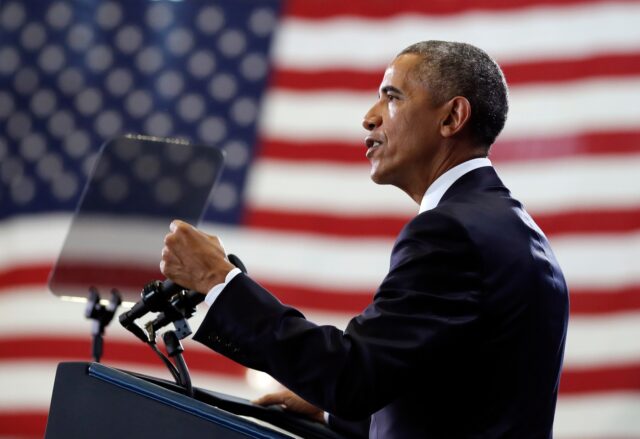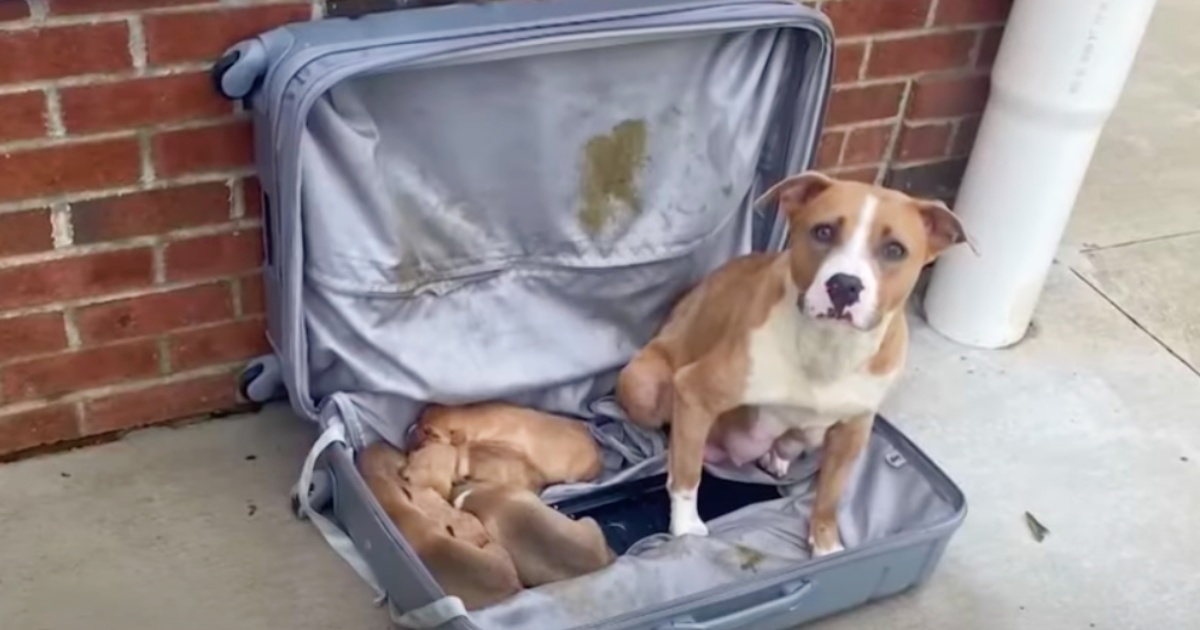

President Donald Trump said Friday he has instructed government lawyers to seek immediate court guidance on how to legally continue payments for the Supplemental Nutrition Assistance Program (SNAP) amid the ongoing government shutdown, as the program faces imminent funding delays while Democrats refuse to pass a clean spending bill.
“Our Government lawyers do not think we have the legal authority to pay SNAP with certain monies we have available, and now two Courts have issued conflicting opinions on what we can and cannot do,” Trump wrote on Truth Social. “I do NOT want Americans to go hungry just because the Radical Democrats refuse to do the right thing and REOPEN THE GOVERNMENT.”
The president explained he has instructed lawyers “to ask the Court to clarify how we can legally fund SNAP as soon as possible,” warning that even with an immediate resolution, benefits may be delayed as states process payments. “If we are given the appropriate legal direction by the Court,” Trump declared, “it will BE MY HONOR to provide the funding, just like I did with Military and Law Enforcement Pay.”
Several days ago, Vice President JD Vance confirmed that U.S. troops would continue receiving paychecks during the shutdown, following a $130 million private donation accepted by the Department of War to cover military salaries.
The message follows warnings that the Democrat-led shutdown could halt November SNAP payments. Speaker Mike Johnson (R-LA) noted Thursday was the Democrats’ “15th chance” to reopen the government, warning that their continued opposition to a clean continuing resolution would cause benefits to “run dry.”
The U.S. Department of Agriculture previously cautioned that it lacks sufficient funds to issue November benefits, with a contingency reserve of $5 billion falling short of the $8 billion needed to sustain the program. Several governors, including Virginia’s Glenn Youngkin (R), have declared emergencies over the looming lapse.
The Washington Post editorial board this week faulted Democrats for prolonging the shutdown, writing that it is “wrong that Democrats have held the government hostage” over demands to extend Obamacare subsidies. The paper warned that if the standoff persists, “families could start to go hungry.”
Senate Majority Leader Chuck Schumer (D-NY), Sen. Cory Booker (D-NJ), and fellow Democrats, including Sens. Alex Padilla (D-CA), Mark Kelly (D-AZ), and Mazie Hirono (D-HI) have argued that Trump could use emergency funds to continue SNAP, claiming he has “billions” at his disposal but is “choosing not to use them.” Rep. Andy Kim (D-NJ), meanwhile, accused Republicans of refusing to negotiate, stating that “Republicans control the House, the Senate, and the White House” and should “bring the House back into session to work and negotiate for the people they claim to serve.”
Trump rejected that characterization in his Truth Social message Friday: “The Democrats should quit this charade where they hurt people for their own political reasons, and immediately REOPEN THE GOVERNMENT.”
Obama to rally Democrats in Virginia and New Jersey in weekend campaign push before Election Day

Former President Barack Obama is headlining rallies for Democrats running for governor in Virginia and New Jersey
Obama to rally Democrats in Virginia and New Jersey in weekend campaign push before Election DayBy OLIVIA DIAZ, MIKE CATALINI and BILL BARROWAssociated PressThe Associated PressRICHMOND, Va.
RICHMOND, Va. (AP) — Former President Barack Obama will headline rallies Saturday for Democrats running for governor in Virginia and New Jersey, corralling voters ahead of elections that may signal the national mood 10 months into Donald Trump’s second presidency and a year ahead of midterm elections that could reshape it.
Republicans in those states are stumping as well on the final weekend of campaigning before Tuesday’s elections, but without the national star power.
And on the west coast, California advocates are making a final push ahead of a statewide referendum over whether to redraw the state’s congressional map in Democrats’ favor. The effort backed by Gov. Gavin Newsom is part of a national redistricting battle that began when Trump urged GOP-run states to help him keep a friendly House majority in 2026.
Obama, the Democrat whom Trump succeeded when he first assumed the presidency, will appear first Saturday with Virginia’s Democratic gubernatorial nominee Abigail Spanberger in Norfolk. Obama then travels to New Jersey for an evening rally with Democratic gubernatorial nominee Mikie Sherrill in Newark. Both events put the nation’s first Black president in areas where Black voter turnout is key for Democratic victories.
Virginia Republican nominee Winsome Earle-Sears, the current lieutenant governor, and New Jersey Republican Jack Ciattarelli, a former state lawmaker, have busy itineraries, as well.
The Virginia contest ensures the election of the first woman to lead the Commonwealth since its 1776 founding. If elected, Earle-Sears would be the first Black woman elected governor of any state.
Democrats need strong Black turnout
Democratic Virginia House Speaker Don Scott brushed off questions about whether Obama was needed to help turn out Black voters who are key to Democrats’ coalition of voters, saying his popularity spans racial lines.
“Black folks and white folks are inspired by his leadership. They’re inspired by the way that he governed himself,” said Scott, Virginia’s first Black state House speaker.
Obama’s campaign swing affirms how popular the 64-year-old remains among his party’s base more than eight years removed from the White House. Yet it underscores Democrats’ lack of current top leaders and surrogates, with Republicans holding all levers of federal power and a cadre of Democratic governors and lawmakers vying for status as national figures.
And, Scott’s protests aside, the visit highlights pressure on Democrats to maximize their diverse coalition after Trump chipped away in 2024 at Democrats’ usual advantages among Black and Hispanic voters. Trump lost Virginia and New Jersey but narrowed the margins in both states from his 2020 loss to Democrat Joe Biden. Republicans believe New Jersey, especially, is ripe to continue that trend for Ciattarelli.
Trump isn’t on site but he’s in the conversation
Trump endorsed Ciattarelli and has said — without naming Earle-Sears — that he backs the GOP candidate for Virginia governor. The president conducted a phone rally for Ciattarelli. He has not campaigned in person for either nominee, despite traveling multiple times in recent months to his golfing resort in New Jersey.
That reflects the tightrope Republicans must walk: Trump remains intensely popular among the most conservative voters but has a more precarious standing with the rest of the electorate.
Spanberger and Sherrill have tried to capitalize.
“Jack won’t say one bad word about the president,” Sherrill charged in a debate with Ciattarelli.
Ciattarelli countered that “no matter who sits in the White House, my job is to stand up for the 9.3 million citizens of the state, and I will.” He then played up his Trump ties. “It’s best to have a relationship with whoever occupies the White House,” he said.
Earle-Sears aligns herself with the president, and according to AdImpact data, Spanberger’s biggest advertising investment has gone to spots that try to tie Earle-Sears to Trump.
The lieutenant governor will lead GOP turnout rallies Saturday in Republican-rich small towns, first in Abingdon in the southwest corner of Virginia, then in Purceville, in the state’s northernmost reaches near the Pennsylvania border.
Ciattarelli has stops in Woodbridge, Westfield and Fairfield, an itinerary that puts him in the exurbs of Newark, then across the state in a considerably less densely populated, more Republican swath.
The economy and shutdown overshadow the governor’s races
Spanberger and Sherrill, both center-left Democrats who helped the party retake the U.S. House in the 2018 midterms during Trump’s first term, have emphasized economic arguments.
They’ve pledged to tackle rising consumer costs and blasted Trump for failing to reduce prices as he promised in the 2024 campaign. In New Jersey, however, Ciattarelli has blamed Democrats for higher energy costs because outgoing Gov. Phil Murphy has been leading the state for two terms.
The Democratic candidates have blasted the Republicans’ federal domestic policy and tax cut bill. In Virginia, Spanberger has highlighted Trump’s Department of Government Efficiency and, to a lesser degree, the ongoing federal shutdown — both of which have a disproportionate impact in a state that has more than 300,000 federal employees, according to the U.S. Census Bureau.
Earle-Sears has tried to pin the shutdown on Spanberger, arguing the former congresswoman should use her leverage with Virginia’s Democratic U.S. senators. Both senators have voted against the GOP’s spending extension bill as Democrats demand Republicans address looming health care cuts.
Additionally, the contests could offer some clues as to whether social issues carry any less weight with voters than in previous elections. Spanberger and Sherrill herald their support for abortion rights, Spanberger doing so in the last Southern state to make the procedure widely accessible. Earle-Sears counters with a focus on transgender policies, trying to frame Spanberger as out of step with mainstream voters in the same way Trump used the issue against Democrat Kamala Harris in 2024.
California will have an immediate midterm impact
While results in Virginia and New Jersey will be mere guideposts for the 2026 midterms, California stands to have the most immediate impact on the national landscape.
Voters there are deciding whether to override a nonpartisan redistricting commission and approve a new congressional map that is intended to send five more Democrats to Washington.
It’s a direct counter to neutralize Texas’ plan, already approved, that was drawn to tilt five seats in that state to the Republican column. And more states have followed suit, putting the national map itself in flux in an unprecedented mid-decade scramble years after the usual post-census redistricting process.
Republicans began the current Congress with just a 220-215 advantage in the House. That means just a few seats could determine whether Trump enjoys outright GOP control in Washington for the duration of his presidency or faces a new Democratic majority that, if patterned after his first term, blocks his agenda, opens an investigation of his administration and considers articles of impeachment.


























:max_bytes(150000):strip_icc():focal(736x253:738x255)/Susan-Lucci-All-My-Children-012325-83f3caf4d43c439d9137226e36e1cf4f.jpg?w=1200&resize=1200,0&ssl=1)




:max_bytes(150000):strip_icc()/sharon-ozzy-osbourne-23rd-Annual-Elton-John-AIDS-Foundation-Academy-Awards-Viewing-Party-2015-100925-ace92e7fd9b848c4a71a6eac52c3ac9b.jpg?w=1200&resize=1200,0&ssl=1)

:max_bytes(150000):strip_icc():focal(749x0:751x2):format(webp)/kelly-osbourne-weight-loss-121025-b283f8fca8744c28ad8f9cdff86eea30.jpg?w=1200&resize=1200,0&ssl=1)


:max_bytes(150000):strip_icc():focal(749x0:751x2)/blake-lively-ryan-reynolds-112125-6d83ee2e446a4e7986a2027dc72f7f51.jpg?w=1200&resize=1200,0&ssl=1)





